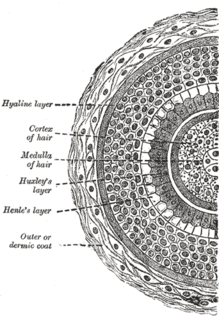 W
WHair is a protein filament that grows from follicles found in the dermis. Hair is one of the defining characteristics of mammals. The human body, apart from areas of glabrous skin, is covered in follicles which produce thick terminal and fine vellus hair. Most common interest in hair is focused on hair growth, hair types, and hair care, but hair is also an important biomaterial primarily composed of protein, notably alpha-keratin.
 W
WAbdominal hair is the hair that grows on the abdomen of humans and non-human mammals, in the region between the pubic area and the thorax (chest). The growth of abdominal hair follows the same pattern on nearly all mammals, vertically from the pubic area upwards and from the thorax downwards to the navel. The abdominal hair of non-human mammals is part of the pelage,.
 W
WAfro-textured hair, or kinky hair, is the hair texture of populations in Africa and the African diaspora. Each strand of this hair type grows in a tiny, angle-like helix shape. The overall effect is such that, contrasted to straight, wavy or curly hair, afro-textured hair appears denser. Sometimes, a person's hair has different textures.
 W
WAlopecia areata, also known as spot baldness, is a condition in which hair is lost from some or all areas of the body. Often, it results in a few bald spots on the scalp, each about the size of a coin. The disease may cause psychological stress. People are generally otherwise healthy. In a few cases, all the hair on the scalp is lost, or all body hair is lost, and loss can be permanent.
 W
WAlopecia totalis is the loss of all skull and facial hair. Its causes are unclear, but believed to be autoimmune. Research suggests there may be a genetic component linked to developing alopecia totalis; the presence of DRB1*0401 and DQB1*0301, both of which are Human Leukocyte Antigens (HLA), were found to be associated with long-standing alopecia totalis.
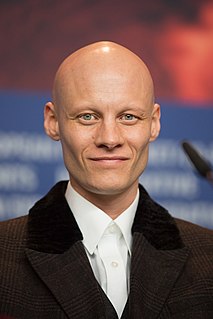 W
WAlopecia universalis (AU), also known as alopecia areata universalis, is a medical condition involving the loss of all body hair, including eyebrows, eyelashes, chest hair, armpit hair, and pubic hair. It is the most severe form of alopecia areata.
 W
WBear's grease was a popular treatment for men with hair loss from at least as early as 1653 until about the First World War. The myth of its effectiveness is based on a belief that as bears are very hairy, their fat would assist hair growth in others. Nicholas Culpeper, the English botanist and herbalist wrote in 1653, in his The Physician's Library, "Bears Grease staies [stops] the falling off of the hair." Hildegard of Bingen (1098–1179), Benedictine mystic, composer and woman of letters, also recommended the use of the substance in her Physica. A number of cosmetics companies sold bear's grease, and it was a trademark of Atkinsons of London, who sold "Bears Grease Pomade".
 W
WPiedraia hortae is a superficial fungus that exists in the soils of tropical and subtropical environments and affects both sexes of all ages. The fungus grows very slowly, forming dark hyphae, which contain chlamydoconidia cells and black colonies when grown on agar. Piedraia hortae is a dermatophyte and causes a superficial fungal infection known as black piedra, which causes the formation of black nodules on the hair shaft and leads to progressive weakening of the hair. The infection usually infects hairs on the scalp and beard, but other varieties tend to grow on pubic hairs. The infection is usually treated with cutting or shaving of the hair and followed by the application of anti-fungal and topical agents. The fungus is used for cosmetic purposes to darken hair in some societies as a symbol of attractiveness.
 W
WCarpronium chloride (INN) is a hair growth reagent with a vasodilatory action.
 W
WChest hair is hair that grows on the chest of a male in the region between the neck and the abdomen. Chest hair develops during and after puberty along with other types of androgenic hair.
 W
WThe Curly Girl Method is an approach to hair care designed by author Lorraine Massey for natural hair that has not been chemically relaxed. This method discourages the use of shampoo. Among other things, it calls for the use of a cleansing conditioner in place of shampoo, no silicones, the use of a diffuser when blowdrying, and no combs, brushes, or terrycloth towels. It also includes tips for using hair gel and other styling products. The aim in general is to treat naturally curly hair gently, minimizing damage to the hair cuticle; to keep it moisturized, since curly hair is more prone to dryness than straight hair; and, perhaps most significantly, to accentuate rather than interfere with the hair's natural curl pattern.
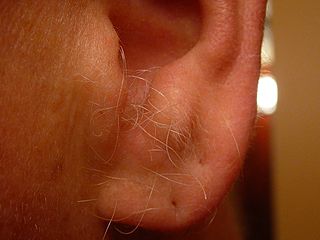 W
WEar hair is the terminal hair arising from folliculary cartilage inside the external auditory meatus in humans. In its broader sense, ear hair may also include the fine vellus hair covering much of the ear, particularly at the prominent parts of the anterior ear, or even the abnormal hair growth as seen in hypertrichosis and hirsutism. Medical research on the function of ear hair is currently very scarce.
 W
WFrizz is hair that does not align with the surrounding hairs, but stands up or curls independently, creating a fuzzy or irregular texture. The three main causes of frizz are genetics, hair damage, and humidity. Frizzy hair can be seen as a positive or a negative trait depending on the current fashion and one's personal preference. Many hair products, such as gels, pomades, and hair waxes, are designed to reduce frizz.
 W
WHair diseases are disorders primarily associated with the follicles of the hair.
 W
WHair fetishism, also known as hair partialism and trichophilia, is a partialism in which a person sees hair – most commonly, head hair – as particularly erotic and sexually arousing. Arousal may occur from seeing or touching hair, whether head hair, armpit hair, chest hair or fur. Head-hair arousal may come from seeing or touching very long or short hair, wet hair, certain colors of hair or a particular hairstyle. Pubephilia is sexual arousal at the sight or feel of pubic hair.
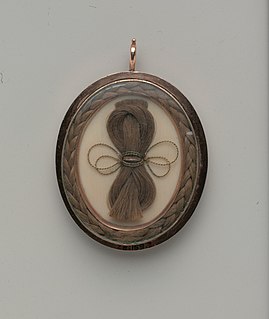 W
WHairwork, or jewelry made of human hair, has appeared throughout the history of craft work, particularly those made to be used for private worship or mourning. From the Middle Ages through the early twentieth century, memorial hair jewelry remained common. Hair, considered to be a remnant off the person it was cut from, also has often played a part in myths and legends; in a Swedish book of proverbs, one can read that “rings and bracelets of hair increase love”. One example can be found in Denmark, at Rosensborg’s palace, which is a bracelet of precious metal with a simple braided lock of hair - a gift from King Christian IV (1577-1648) to his queen. Another example would be the rings commemorating the execution of King Charles I of England (1600-1649), which circulated among his faithful supporters. Other famous people who owned hair jewellery include Napoleon, Admiral Nelson, Queen Victoria and her large family, Christina Nilsson and Jenny Lind.
 W
WHair loss, also known as alopecia or baldness, refers to a loss of hair from part of the head or body. Typically at least the head is involved. The severity of hair loss can vary from a small area to the entire body. Inflammation or scarring is not usually present. Hair loss in some people causes psychological distress.
 W
WHair oil is oil applied to the hair as a cosmetic, conditioner, styling aid, restorative or tonic. Different hair oils have been used for many different purposes such as hair growth, health, dryness, scalp, or to fix damaged hair. There are various forms of hair oils that can be applied such as natural hair oils which include traditional hair oils like coconut, castor, or almond oil.
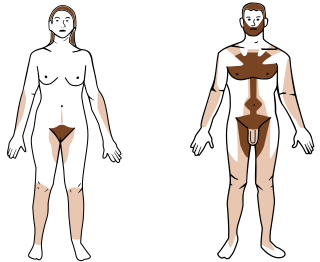 W
WHair removal, also known as epilation or depilation, is the deliberate removal of body hair or head hair.
 W
WA hair tattoo or scalp micropigmentation, is a non-surgical, superficial cosmetic tattoo that gives the illusion of a close buzz cut hairstyle on a bald head or density to a thinning crown. The procedure can also be used to conceal scars from hair transplantation and hide the visual impact of burns or scars on the head. Scalp micropigmentation can be performed on all ethnicities. This procedure does not involve local anesthesia during the procedure. In contrast to traditional tattoos, this treatment is superficial in that it penetrates the epidermal level of the skin, and ink is deposited in the upper dermal level of the skin in order to avoid macro impressions. The advantages of this procedure is that the hairline can be adjusted or touched up with relative ease.
 W
WHair theft has been a recurrent problem in various parts of the world where human hair is in demand either for commercial products such as wigs and hairpieces, or for sexual fetishes. As hair has a high commercial value – in the mid-19th century it was regarded as worth twice its weight in silver – opportunist thieves have targeted long-haired women, and less commonly men and children, with the aim of stealing their hair. Hair thieves have typically sought either to surreptitiously cut off hair in public places, or have mugged people and shorn their heads. The crime of hair theft has been widely reported in North America, Europe, Asia and Australasia over the course of at least 300 years.
 W
WA hair whorl is a patch of hair growing in a circular direction around a visible center point. Hair whorls occur in most hairy animals, on the body as well as on the head. Hair whorls, also known as crowns, swirls, or trichoglyphs, can be either clockwise or counterclockwise in direction of growth.
 W
WA hair's breadth, or the width of human hair, is used as an informal unit of a very short length. It connotes "a very small margin" or the narrowest degree in many contexts.
 W
WHead shaving is the practice of shaving the hair from a person's head. People throughout history have shaved all or part of their heads for diverse reasons including practicality, convenience, fashion, style, religion, aesthetics, culture, and punishment.
 W
WHair color is the pigmentation of hair follicles due to two types of melanin: eumelanin and pheomelanin. Generally, if more melanin is present, the color of the hair is darker; if less melanin is present, the hair is lighter. The tone of the hair is dependent on the ratio of black or brown eumelanin to yellow or red pheomelanin. Levels of melanin can vary over time causing a person's hair color to change, and it is possible to have hair follicles of more than one color on the same person. Some hair colors are associated with some ethnic groups due to observed higher frequency of particular hair color within their geographical region, e.g. straight dark hair amongst East Asians, a large variety of dark, fair, curly, wavy and bushy hair amongst Europeans, curly, dark, and uniquely helical hair with Africans, whilst gray, white hair or "silver", is often associated with age and wisdom.
 W
WHypertrichosis is an abnormal amount of hair growth over the body. The two distinct types of hypertrichosis are generalized hypertrichosis, which occurs over the entire body, and localized hypertrichosis, which is restricted to a certain area. Hypertrichosis can be either congenital or acquired later in life. The excess growth of hair occurs in areas of the skin with the exception of androgen-dependent hair of the pubic area, face, and axillary regions.
 W
WHair loss, also known as alopecia or baldness, refers to a loss of hair from part of the head or body. Typically at least the head is involved. The severity of hair loss can vary from a small area to the entire body. Inflammation or scarring is not usually present. Hair loss in some people causes psychological distress.
 W
W"I Am Not My Hair" is a song by American soul and R&B singer–songwriter India.Arie from her third studio album, Testimony: Vol. 1, Life & Relationship (2006). Written by Arie, Shannon Sanders, and Drew Ramsey, it was released as the album's lead single in late 2005 to moderate chart success. The song was nominated for Best Female R&B Vocal Performance and Best R&B Song at the 2007 Grammy Awards. A remix version of "I Am Not My Hair" featuring Akon was also released.
 W
WA kiss curl describes a lock of hair curling onto the face and usually plastered down. Although the curl could be flattened with saliva, soap or hair lotion was more typically used.
 W
WLanugo is very thin, soft, usually unpigmented, downy hair that is sometimes found on the body of a fetal or new-born human. It is the first hair to be produced by the fetal hair follicles, and it usually appears around sixteen weeks of gestation and is abundant by week twenty. It is normally shed before birth, around seven or eight months of gestation, but is sometimes present at birth. It disappears on its own within a few weeks.
 W
WA lock of hair is a piece or pieces of hair that has been cut from, or remains singly on, a human head, most commonly bunched or tied together in some way. A standard dictionary definition defines a lock as a tress, curl, or ringlet of hair.
 W
WLoose anagen syndrome, also known as loose anagen hair syndrome, is a hair disorder related to dermatology. It is characterised by the easy and pain free detachment of anagen staged hairs from the scalp. This hair condition can be spontaneous or genetically inherited.
 W
WA Lovelock was popular amongst European "men of fashion" from the end of the 16th century until well into the 17th century. The lovelock was a long lock of hair, often plaited (braided) and made to rest over the left shoulder to show devotion to a loved one.
 W
WMenthogen is a topically applied scalp stimulant which is claimed by its manufacturers to treat itchiness and irritation of the scalp as well as combating certain types of alopecia. Since its development Menthogen has been further developed in the UK by a team of trichologists.
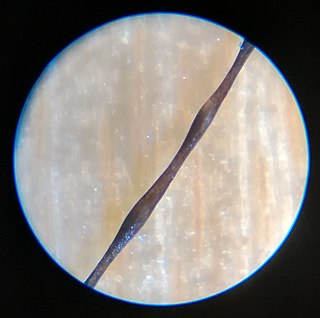 W
WMonilethrix is a rare autosomal dominant hair disease that results in short, fragile, broken hair that appears beaded. It comes from the Latin word for necklace (monile) and the Greek word for hair (thrix).
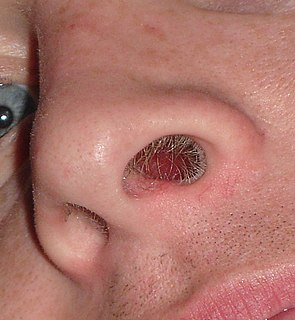 W
WNasal hair or nose hair, is the hair in the human nose. Adult humans have hair in the nostrils. Nasal hair functions include filtering foreign particles from entering the nasal cavity, and collecting moisture. In support of the first function, the results of a 2011 study indicated that increased nasal hair density decreases the development of asthma in those who have seasonal rhinitis, possibly due to an increased capacity of the hair in the nostrils to filter out pollen and other allergens.
 W
WPattern hair loss is hair loss that primarily affects the top and front of the scalp. In male-pattern hair loss (MPHL), the hair loss typically presents itself as either a receding front hairline, loss of hair on the crown (vertex) of the scalp, or a combination of both. Female-pattern hair loss (FPHL) typically presents as a diffuse thinning of the hair across the entire scalp.
 W
WPili torti is characterized by short and brittle hairs that appear flattened and twisted when viewed through a microscope.
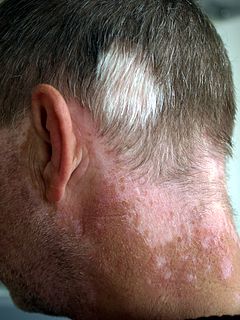 W
WPoliosis, also called poliosis circumscripta, is the decrease or absence of melanin in head hair, eyebrows, eyelashes or any other hairy area. It is popularly known as white forelock when it affects hair directly above the forehead.
 W
WTelogen effluvium is a scalp disorder characterized by the thinning or shedding of hair resulting from the early entry of hair in the telogen phase. It is in this phase that telogen hairs begin to shed at an increased rate, where normally the approximate rate of hair loss is 125 hairs per day.
 W
WTrichotillomania (TTM), also known as hair pulling disorder or compulsive hair pulling, is a mental disorder characterized by a long-term urge that results in the pulling out of one's hair. This occurs to such a degree that hair loss can be seen. A brief positive feeling may occur as hair is removed. Efforts to stop pulling hair typically fail. Hair removal may occur anywhere; however, the head and around the eyes are most common. The hair pulling is to such a degree that it results in distress.
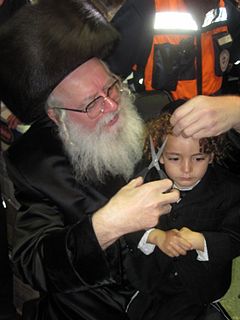 W
WUpsherin, Upsheren, Opsherin or Upsherinish is a haircutting ceremony observed by a wide cross-section of Jews and is particularly popular in Haredi Jewish communities. It is typically held when a boy turns three years old. Among those who practice the upsherin, the male infant does not have his hair cut until this ceremony.
 W
WWhite piedra is a mycosis of the hair caused by several species of fungi in the genus Trichosporon. It is characterized by soft nodules composed of yeast cells and arthroconidia that encompass hair shafts.
 W
WA widow's peak is a V-shaped point in the hairline in the center of the forehead. Hair growth on the forehead is suppressed in a bilateral pair of periorbital fields. Without a widow's peak, these fields join in the middle of the forehead so as to give a hairline that runs straight across. A widow's peak results when the point of intersection on the forehead of the upper perimeters of these fields is lower than usual.